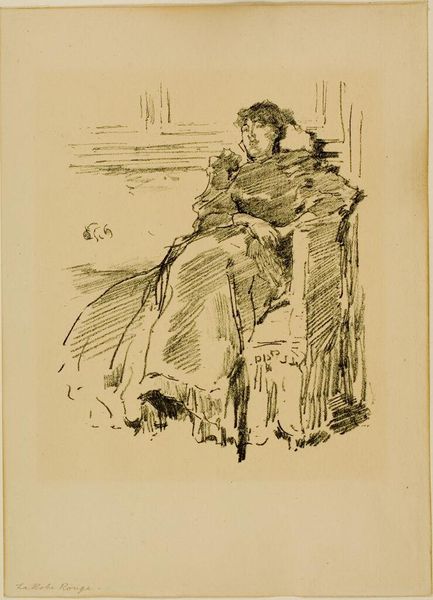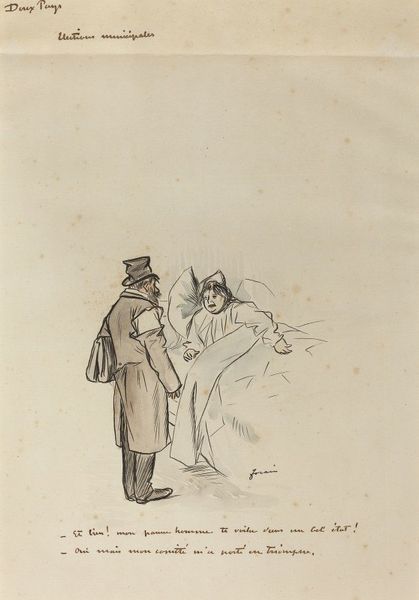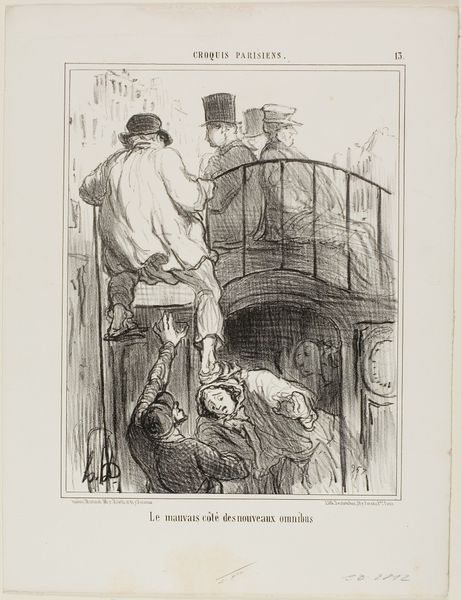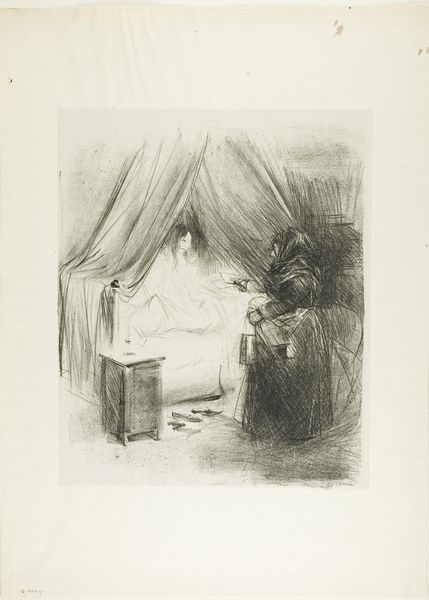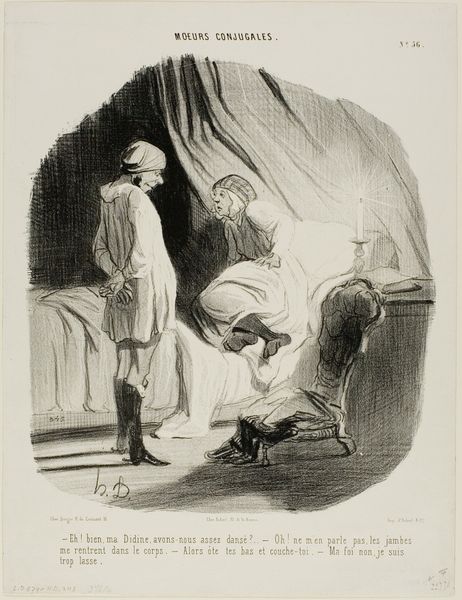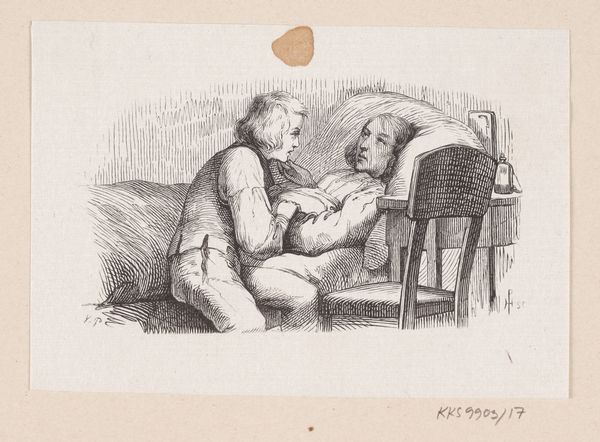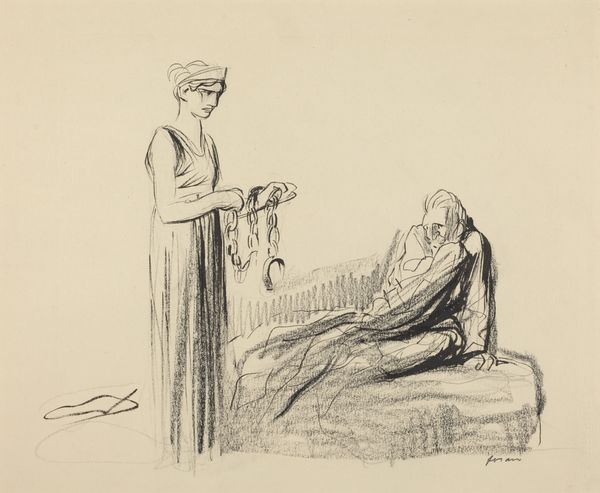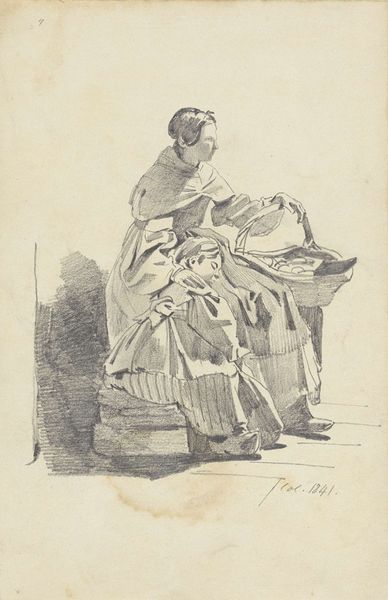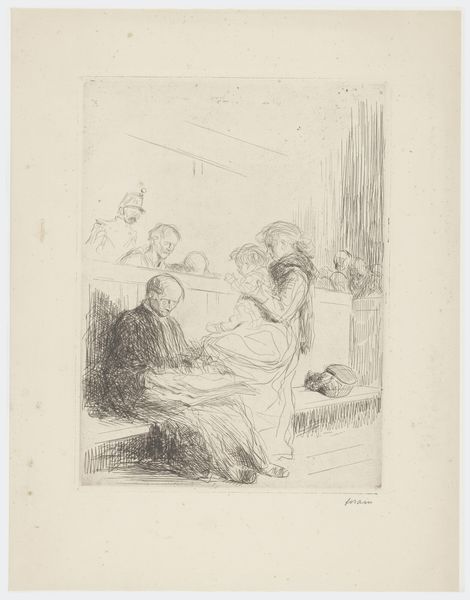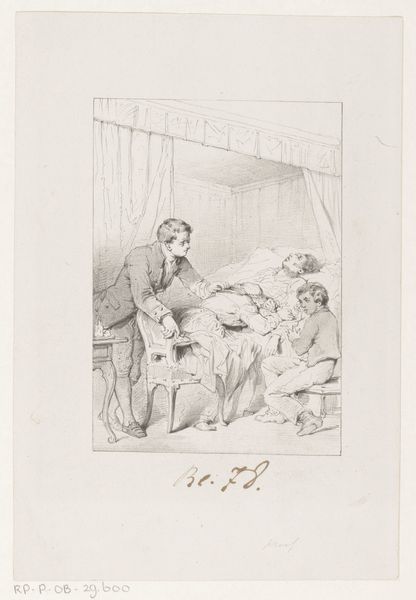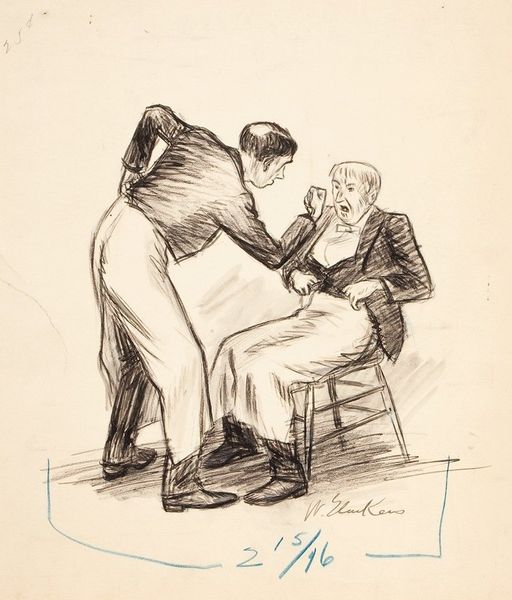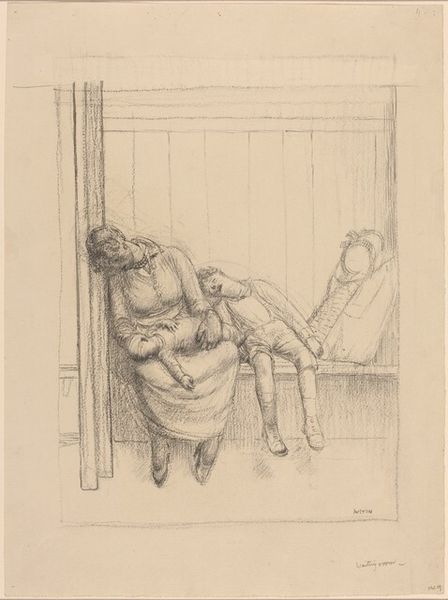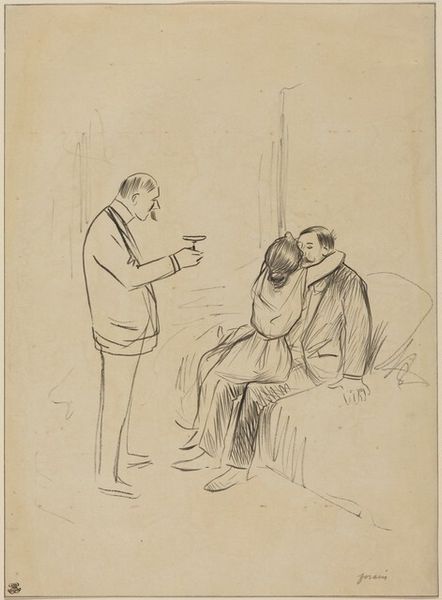
drawing, ink, pencil, pen
#
portrait
#
drawing
#
light pencil work
#
quirky sketch
#
pen sketch
#
pencil sketch
#
figuration
#
personal sketchbook
#
ink
#
ink drawing experimentation
#
pen-ink sketch
#
pencil
#
sketchbook drawing
#
pen
#
watercolour illustration
#
genre-painting
#
sketchbook art
#
realism
Dimensions: height 365 mm, width 273 mm
Copyright: Rijks Museum: Open Domain
Editor: Here we have Heinrich Krabbé's "Visitor at a Deathbed," a pen and pencil drawing, made before 1898. The scene feels intimate, stark even. It's clearly figuration. What historical context informs this drawing? Curator: Krabbé made this before 1898, amidst significant social upheaval and growing awareness of health disparities. Look closely—what power dynamics do you observe within this genre painting? Is it a purely sympathetic portrayal? Editor: Well, there is tenderness, I suppose. But now that you mention power, the visitor *is* standing, in darker clothing, looking down on the other figure lying in bed. The visitor also seems to be the more composed of the two characters depicted in the artwork. Curator: Exactly. Consider the social position of those providing care during this era. The figure standing, attending to the dying man, occupies a particular societal role, one that holds inherent power—be it familial, medical, or even moral. How might Krabbé be commenting on these established structures, the act of visiting as an assertion of dominance, a visual metaphor for control over mortality itself? Editor: So, the "visitor" may symbolize societal imbalances present even during these most intimate, vulnerable moments? I hadn’t considered it from that perspective. Curator: Precisely. And think about the role of illness at the time—often shrouded in shame and stigma, particularly among marginalized communities. Editor: That's fascinating. I’ll certainly look at this work differently now, seeing past the immediate somberness and recognizing its potential sociopolitical implications. Thanks! Curator: Indeed! Engaging with historical context helps unlock deeper meaning within the composition and brushstrokes. We’re able to think beyond what is simply rendered.
Comments
No comments
Be the first to comment and join the conversation on the ultimate creative platform.
